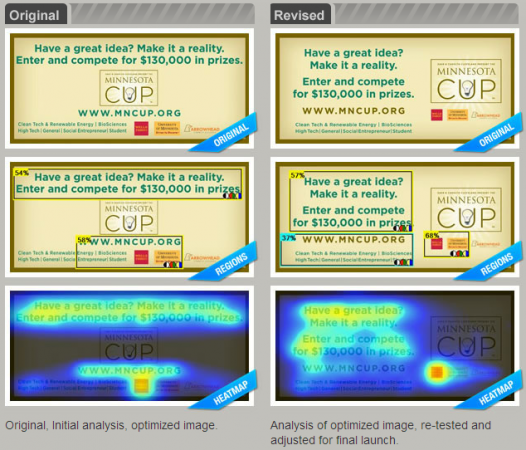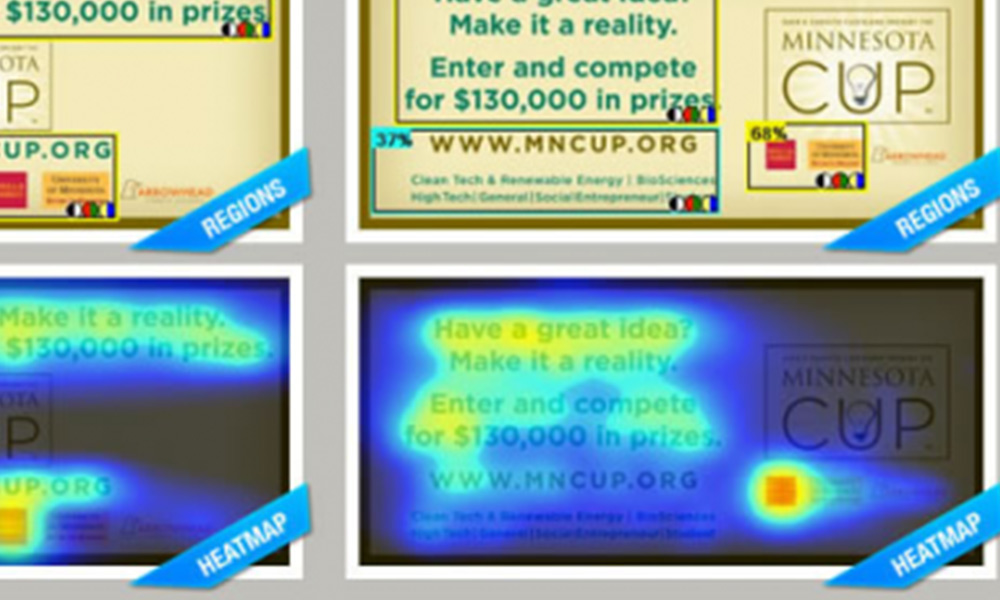I’ve been sent a link to an interesting new service offered by 3M (who despite apparently having a portfolio of 55,000 products I still think of as the Post-it Note company). It is called the ‘Visual Attention Service’ and is pitched around the tag line “You’ve got seconds to engage a viewer. Be sure they count”:
As a designer, your challenge is to maximize visual impact within a visually cluttered world. That’s why we built 3M Visual Attention Service (VAS). 3M VAS uses science-based modeling to help you increase the likelihood people will notice key design elements during the first 3–5 seconds of exposure.
The idea is that, for a certain cost per image (ranging from $20 to $11 depending on bulk), you can upload your design, mark out the important elements you want analysing and then run the VAS analysis. This employs visual algorithms to present an assessment of the probability that viewers will notice those elements within the first 3-5 seconds. It will also indicate other visual properties that catch the eye, regardless of whether you indicated these as key elements.
The output is initially presented using graded, coloured boxes around the prominent properties indicating the probability levels. As you then approach a decision about redesigning the image you can view a heatmap representation to gain further insight into where the viewer is likely to focus their attention.
Here is an example from the 3M site showing an original design on the left, the initial probability analysis and the corresponding heatmap, and then the revised version and the resulting improvements in the viewing patterns.

I have a suspicion that the design flaws used in their gallery examples are so obvious that they have been reverse engineered to present the service in the most positive light. I have signed up for a trial of the service to see how some of my own images might be assessed through this system, but the emailed account activation has yet to arrive, an hour after I completed the form. If it does ever arrive I will give it a go and publish the results.
In summary, it is easy to default to a cynical position about such tools, perhaps instantly passing something like this off as nothing more than a gimmick. However, I do think VAS offers a useful and accessible service especially for supporting those customers who might not have access to the expertise or design skills necessary to get it right first time. I would expect, however, that trained designers would never create such design shortcomings this service helps to identify.

